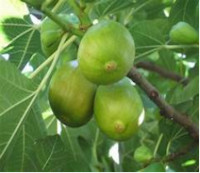Exploration of Endophytic Bacteria in FIGS (Ficus carica L.) with Antibacterial Agent Potential
http://www.doi.org/10.26538/tjnpr/v7i7.10
Keywords:
16S rRNA Gene, Molecular identification, Antibacterial, Endophytic bacteriaAbstract
Tin or Ara plants are one of the plants that can be used as a source of endophytic bacteria. Figs contain phenols, benzaldehyde, terpenoids, flavonoids, alkaloids, fiber, and polyphenols. This fruit is used by the society to treat asthma, bronchitis, dry cough, diabetes, cancer, coronary heart disease, gout, and osteoporosis. In this research, endophytic bacteria will be used as a source of
bioactive compounds that have the potential to be antibacterial. The isolation of endophytic bacteria was carried out using the scatter plate method. The isolated endophytic bacteria were identified macroscopically, microscopically, and molecularly. There are 3 potential isolates that produce antibacterial compounds: TH9, TH10, and TH11. The results of bacterial species barcoding of full length of 16S rRNA bidirectional PCR sequencing of the three isolates were adjusted to the data available at the NCBI Genbank through the BLAST program. TH9 isolate had 99.86% homology with Bacillus velezensis strain NM374, TH10 isolate had 99.93% homology with Stutzerimonas stutzeri CCUG 11256 strain and TH11 isolate had 99.93% homology with Staphylococcus wareri strain CG10.
References
Nwinyi O, Chinedu SN, Ajani, Olayinka O, Chinwe IO, Ogunniran KO. Antibacterial effects of extracts of Ocimum
gratissimum and Piper guineens on Escherichia coli and Staphylococcus aureus. Afric J. F Sci. 2009; 3 (3):22-25.
World Health Organization. "Epidemic-Prone and Pandemic-Prone Acute Respiratory Diseases: Infection Prevention and Control in Health-Care Facilities. Who.
Indonesia Partner in Development. 2008; 53 (2):8–25.
Bacon CW, Hinton D. Endophytes: the endophytic Niche, its occupants and its utility. in plant-associated bacteria. Springer. Dordrecht. 2007; 155-194
Strobel G, Daisy B. Bioprospecting for microbial endophytes and their natural products. Microbiol Mol Biol Rev. 2003; 67(4):491-502.
Tan R X, Zou WX. Endophytes: a rich source of functional metabolites. Nat Prod Rep. 2001; 18(4):448-459.
Aristina RF, Astuti W, Pratiwi DR. Screening andphytochemicals test of extract endhophytes bacteria from stem of pacing (Costus sp.). J Atomik. 2019; 4(1):21-24.
Aryani P, Kusdiyantini E, Suprihadi, A. Isolasi bakteri endofit daun alang-alang (Imperata cylindrica) dan metabolit sekundernya yang berpotensi sebagai antibakteri. J Akad
Biol. 2020;9(2):20-28.
Joseph B and Raj SJ. Pharmacognostic and phytochemical properties of Ficus carica Linn–an overview. Inter J pharmtech research. 2011;3(1):8-12.
Ramadhan MR, Pratiwi IDP K, Arihanta NMIH. Uji daya hambat ekstrak buah Tin (Ficus racemosa Linn) terhadap pertumbuhan Staphylococcus aureus ATCC 25923. J Ilm dan
Teknol Pang. 2020;9(1):38-45
Qomaruddin M, Riana D, Anton A. Segmentasi K-means citra daun tin dengan klasifikasi ciri gray level Co occurance matrix. J Sist dan Tekn Inform. 2021; 9(2):223-233.
Rau CH, Yudistira A, Simbala HEI. Isolasi, identifikasi secara molekuler menggunakan Gen 16s rRNA dan uji aktivitas antibakteri dari bakteri endofit alga Padina sp.
Pharmacon, 2018; 7(2):53–61.
Alvarado-Marchena L, Schmidt-Durán A, Alvarado-Ulloa C, Chacón-Cerdas R, Flores-Mora D. Molecular characterization of the endophytic bacteria found in the fig
crops (Ficus carica var. Brown Turkey) in Costa Rica. J Agric Biol Sci. 2016; 11(7):290-297.
Linelejan YT, Umboh SD, Tallei TE. Identifikasi bakteri endofit daun Ficus Minahassae Miq. berdasarkan gen 16s rRNA. J. MIPA Unsrat Online. 2018;7(2):16-19
Leonita S, Bintang M, Pasaribu FH. Isolation and identification of endophytic bacteria from Ficus variegata blume as antibacterial compounds producer. J Cur Biochem.
;2(3):116-128.
Oktiansyah, R.E. Elfita, H. Widjajanti, A. Setiawan, M.Mardiyanto, and Nasution SS. Antioxidant and Antibacterialctivity of Endophytic Fungi Isolated from The Leaves of
Sungkai (Peronema canescens): Trop J. of Nat Prod Res. 2023; 7(3): 2596-2600
Jilali, S. B., I. Rachid, B. Ghada, M. Tarik, R. Sanae, and K. Abderrazzak. Effect of Isolation Techniques on the Quantity, Quality, and Antimicrobial Activity of Lavandula Dentata
Essential Oils:. Trop J. of Nat Prod Res. 2023; 7(4):2713- 2717.
Ismail YS, Yulvizar C, Putriani P. Isolasi, karakterisasi dan uji aktivitas antimikroba bakteri asam laktat dari fermentasi biji kakao (Theobroma cacao L.). J Bioleuser. 2017;1(2).
Jabeen R , Iftikhar T, Batool H. Isolation, characterization, preservation and pathogenicity test of Xanthomonas oryzae pv. oryzae causing BLB disease in rice. Pak J. Bot. 2012;
(1):261-265.
Oktavia N, dan Pujiyanto S. Isolasi dan uji antagonisme bakteri endofit tapak dara (Catharanthus roseus L.) terhadap
bakteri Escherichia coli dan Staphylococcus aureus. J. Berk Bioteknol. 2018; 1(1): 6-12.
Hallman J, Hallmann AQ, Mahaffee W, Kloepper JW. Bacterial endophytes in agricultural crops. Can J. Microbiol. 1997; 43: 895-914.
Purwanto UMS, Fachriyan HP, Maria B. Isolasi bakteri endofit dari tanaman sirih hijau (Piper betle L.) dan potensinya sebagai penghasil senyawa antibakteri. J. Cur
Biochem. 2014;1(1): 51-57.
Nam MH, Park MS, Kim HG, Yoo SJ. Biological control of strawberry Fusarium wilt caused by Fusarium oxysporum f. sp. fragariae using Bacillus velezensis BS87 and RK1
formulation. J. Microbiol Biotechnol. 2009;19:520-524.
Gomila M, Mulet M, García Valdés E, Lalucat J. Genomebased taxonomy of the genus Stutzerimonas and proposal of S. frequens sp. nov. and S. degradans sp. nov. and Emended
descriptions of S. perfectomarina and S. chloritidismutans. Microorganisms, 2022; 10(7):1363.
Miller KI, Qing C, Sze DM, Roufogalis BD, Neilan BA. Culturable endophytes of medicinal plants and the genetic basis for their bioactivity. Microb Ecol. 2012; 64: 431-449

Published
How to Cite
Issue
Section
License
Copyright (c) 2023 Tropical Journal of Natural Product Research (TJNPR)

This work is licensed under a Creative Commons Attribution-NonCommercial-NoDerivatives 4.0 International License.


















